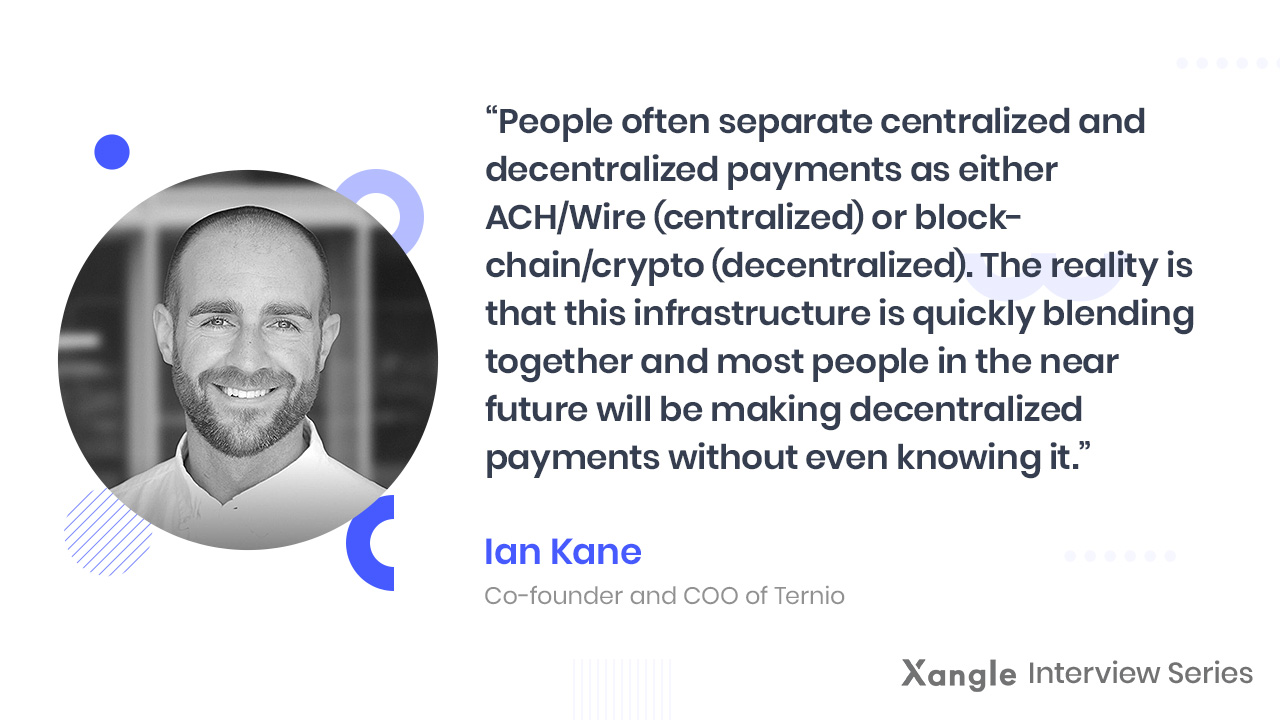Decentralized Payments: A Conversation With Ternio’s Ian Kane
The promises made by blockchain developers extend far beyond the theoretical applications suggested by Satoshi Nakamoto in the Bitcoin whitepaper. There, the pseudonymous developer(s?) presented Bitcoin as a solution to “allow online payments to be sent directly from one party to another without going through a financial institution.”
To some, this is considered not just the first such use of blockchain, but also the first fully fleshed-out version of decentralized finance. Lucky for us, it is easy to distill that use case into one word: payments. We published an article on Decentralized payments protocols which explained that we are already seeing payments emerge as a significant feature of the decentralized finance (DeFi) ecosystem.
It has been over ten years since the release of the Bitcoin whitepaper. Since then, the blockchain industry has borne various branches, many of which now stem from Ethereum and a select few other chains which we refer to now as DeFi. DeFi, like Bitcoin, promises trustless payments absent of a third party intermediary. It also promises self-custody, where each individual has full control of their own finances (scary!).
As time passes into this 3rd decade of the 21st century, developers and entrepreneurs alike realize the need for decentralized financial solutions among individuals and institutions. That’s right, even businesses these days seek out self-banking solutions to ramp up the efficiency of their operation. That’s where Ternio comes in, which boldly claims to empower companies to be their own bank. The following is an interview we recently had with Ian Kane, Co-founder and COO of Ternio.
What's your background? How did you get involved in crypto/blockchain?
IK: I spent 10 years in media with a heavy focus on business development, sales, and strategy. I was the first employee at an adtech startup that grew to $50 million year business. I worked in both early stage and mature organizations driving the go-to-market strategy for various data and media products. I was also on the board of advisors for other Adtech companies, as well as a few acquisitions on the buy and sell side.
During my time in adtech, Bitcoin was becoming very popular and I became interested in what drove the underlying value. It’s what led me to start researching blockchain (the underlying protocol for Bitcoin and other digital currencies). There are many types of blockchain’s with different currencies. While the price of the cryptocurrency on the blockchain can be volatile, the underlying value of blockchain tech is very apparent.
The more I learned about this technology, the more I believed it was going to fundamentally change the world — similar to the internet in the early 90’s. We started Ternio in December 2017 and focused on how Blockchain could be applied to streamline a number of inefficiencies in the Enterprise market such as supply chain transparency and payment remittance. We focused on what we thought were two things holding blockchain and cryptocurrency back from mass adoption — scalability and usability.
What value does Ternio bring to users?
IK: Ternio provides frictionless on and off ramps for consumers to get into or out of crypto such as FDIC Insured Bank Accounts and VISA Debit Cards that keep the customer in crypto until the point of sale. You can see an example of this at GetBlockCard.com. We also white-label our technology to other companies or foundations in the crypto space such as Litecoin Foundation, Paxful, and many others.
Our platform connects traditional enterprise, fintech, banking, systems with blockchain infrastructure giving real world utility to digital assets. Our products enable instant remittance and the transfer of value on blockchain rails in a compliant and regulated environment.
Where do you see Ternio five years from now?
IK: I see Ternio becoming a fin-tech Unicorn and being a major contributor to the digital currency ecosystem. The platform and infrastructure we have developed has been years in the making and it’s very rewarding to see our products like BlockCard, Litecoin Card, and others being used by consumers today.
We have been flying under the radar for quite some time, but I don’t think it’s possible for it to stay that way much longer.
What are the most common misconceptions you hear about decentralized payments?
IK: People often separate centralized and decentralized payments as either ACH/Wire (centralized) or blockchain/crypto (decentralized). The reality is that this infrastructure is quickly blending together and most people in the near future will be making decentralized payments without even knowing it. The blockchain is a better, faster, and more efficient way of making payments and those companies that fail to adapt will be left behind.
What's next for decentralized payments in 2021?
IK: Likely more regulation, but also great clarity around those new rules - not just in the US, but also globally. CBDC’s are going to be a major driving force around those rules.
Follow Ian on LinkedIn and Twitter.
